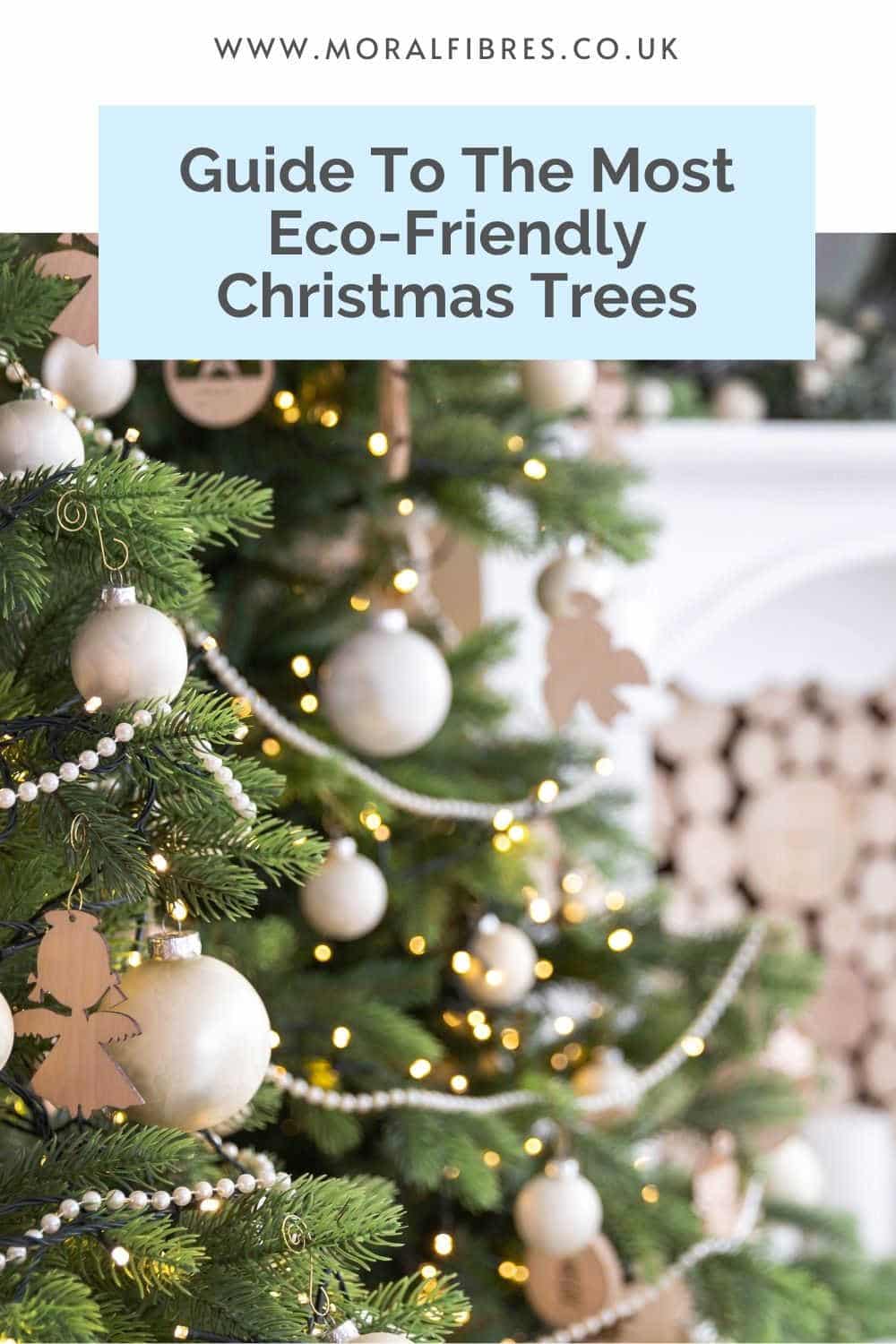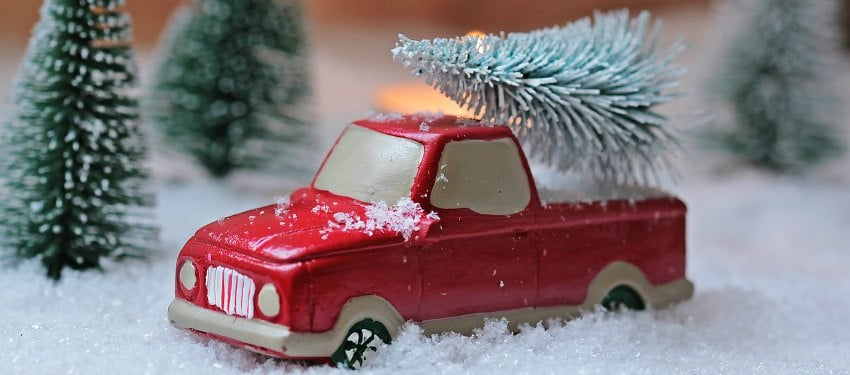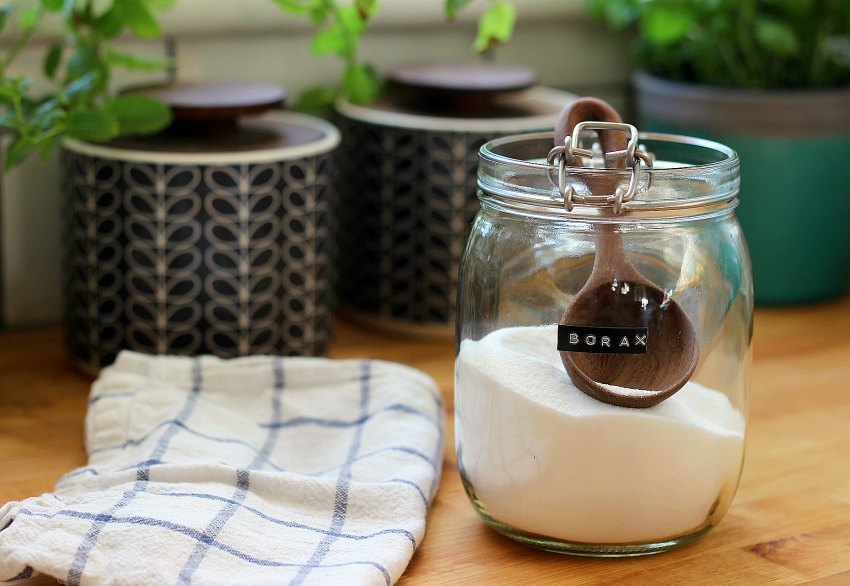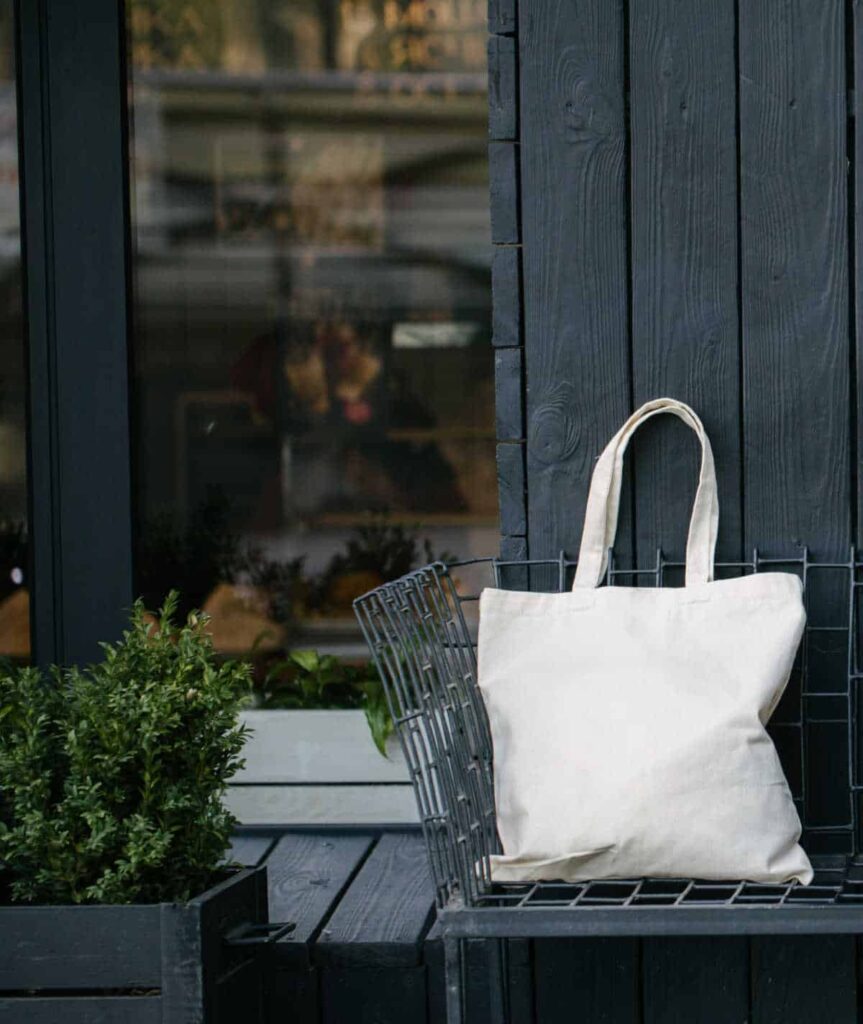Sustainable & Eco-Friendly Christmas Tree Guide 2024
To support the running costs of Moral Fibres, this post may contain affiliate links. This means Moral Fibres may earn a small commission, at no extra cost to readers, on items purchased through these links.
Are you wondering what the most sustainable eco-friendly Christmas tree option is? Is it a real tree? Is it a fake tree? Let me explain all in this guide to sustainable and ethical Christmas trees.
Christmas wouldn’t be Christmas without a Christmas tree. But what about the environmental cost?
With The British Christmas Tree Growers Association (BCTGA) estimating that around 7 million real trees are bought each year by UK households, alongside who knows how many artificial trees, it’s no wonder that many of us are pondering what the most sustainable or eco-friendly Christmas tree option is.
Should you opt for an artificial tree, that you can retrieve from the loft every year? Or is the most environmentally friendly to opt for a newly felled tree that ends up discarded in the New Year? It’s certainly an eco-friendly riddle wrapped in an enigma. Or is it?
Before you decide to shun Christmas trees altogether, let’s have a look at what the most sustainable and eco-friendly Christmas trees are.
What Is The Most Sustainable and Eco-Friendly Christmas Tree?

Ready to take on this eco-friendly enigma? First, let’s take a look at how sustainable real trees are, compared to fake trees:
The Environmental Case For Real Trees
If you feel that Christmas isn’t Christmas without a real tree, then worry not. The Carbon Trust has found that real Christmas trees have a smaller carbon footprint compared to artificial trees.
According to the Trust, a natural two-metre Christmas tree that is disposed of in a landfill after Christmas has a carbon footprint of around 16kg of carbon dioxide.
Meanwhile, a two-metre real Christmas tree that is properly disposed of after its use has a carbon footprint of around 3.5kg of carbon dioxide. Properly disposed of in this sense means burning it on a bonfire, planting it in your garden (if it has roots), or having it chipped by your local Council.
This means that real trees are therefore better for the environment than fake ones. Especially so when you consider that real trees absorb carbon dioxide during their growth period, compared to fake ones that burn fossil fuels during their production.
Where to Buy A Sustainable Real Christmas Tree
Rather than buying an imported tree with a hefty carbon footprint, try and buy one that has been locally grown.
If you are in Scotland then without a doubt the best place to purchase a real tree is from Caring Christmas Trees. This is part of the Bethany Trust charity. All of its trees are sustainably grown in Scotland by local growers. What’s more, the money raised helps homeless and vulnerable people in Scotland.
If you’re in England then the Forestry Commission has Christmas tree sales centres dotted around the country. Here you can buy a sustainably grown, local, and eco-friendly Christmas tree. All profits are reinvested back into the Forestry Commission’s work on maintaining forests for future generations.
Caring For Your Christmas Tree
To keep your tree in tip-top condition all throughout the festive season, then it’s best to buy a real Christmas tree when you want to put your tree up, rather than leaving it sitting in your house until you are ready to put it up.
When you bring your Christmas tree home, it’s a good idea to saw a couple of centimetres off the base of the tree to open up the pores of your tree. This is necessary, as when trees are cut, sap oozes out of the cut area.
This sap hardens, creating a water-resistant seal within about 5 hours of the tree being cut, and not put directly into water. This seal prevents the tree from absorbing much water and could shorten your tree’s lifespan.
Once you’ve cut a bit off your tree, next mount your tree in a water-holding stand filled with water.
Now you’ll need to think about placement. The best place for a real Christmas tree is away from direct heat sources, such as a radiator or fire, as these will dry your tree out too quickly.
Finally, in order to keep your tree happy, treat it like a houseplant! Keep the container topped up with water every day. Trees are thirsty things.
Disposing Of Your Tree Correctly
Once Christmas is over, trees can be shredded and composted, or used in your wood burner (if you have one). If this is the case, do leave the wood to season for as long as you can. This is because burning green or unseasoned wood is not good in terms of particulate emissions. If you can, leave at least a year between cutting and burning. Doing so will allow the wood to properly season.
Alternatively, most Councils offer a kerbside recycling scheme, where they will collect your tree in early January. They then shred them into chippings, which are typically used in parks. Contact your local council for advice on tree recycling in your area.
Alternatively, a rooted tree can be planted in your garden. If you don’t have space, ask around. A local community growing group may have space for your tree.
Are Fake or Artificial Christmas Trees Eco-Friendly?

Now we know that real Christmas trees are the most eco-friendly option, you’re probably wondering what the deal is with fake trees that make them not the best for the environment.
According to the Carbon Trust, a 2-metre-high artificial Christmas tree made from plastic has a carbon footprint of around 40kg of CO2. When we compare that to a real tree, disposed of properly, that would mean a fake tree would need to be used for at least 10 years to be greener than a real tree.
Why is the carbon footprint of an artificial tree so high? As well as being made from carbon-intensive fossil fuels, the majority of artificial trees are imported from further away, mainly from China, contributing to their carbon footprint.
This isn’t to say that all fake trees are bad for the environment. If it’s something you are going to use over the long term then I’d say go for it. Buying a real Christmas tree every year can be expensive. It can be more affordable to instead shell out a one-off cost for an artificial tree that you are going to use for years to come.
What to Consider When Buying An Artificial Christmas Tree
If you do choose to buy a fake tree, then buy the best you can afford in a green classic tree shape. This style won’t date unlike some of the more modern fake Christmas tree styles.
I’d also recommend buying one without in-built lights as they are difficult to fix if they break. And buying a secondhand tree via eBay or Facebook Marketplace would make for the most eco-friendly and affordable way of buying a fake Christmas tree.
We personally have a fake 6ft Christmas tree that we bought several years ago secondhand on eBay. I’m in no hurry to replace it. In fact, I sincerely hope we can still be using it in 50 years’ time! We also have a smaller tree that my mum and dad have had for about forty years! I love getting it out of the loft every year. It really makes me smile and remember great Christmas memories from years and decades gone by.
What About Other Environmentally Friendly Christmas Tree Options?
If a real tree isn’t for you, and you can’t commit to using a fake tree for at least ten years, then don’t worry. There are other sustainable solutions that may fit – both in terms of how you celebrate Christmas and your budget.
Buy a Potted Tree
One great option for an eco-friendly Christmas tree if you have a garden is to buy a potted Christmas tree. You can buy potted trees easily from most garden centres. For a lower carbon footprint, look for UK-grown varieties, like Blue Spruce or Nordman.
Once Christmas is done simply pop it in your garden in its pot. The following year you can bring it back into your house and decorate it, before putting it back in the garden again once Christmas is over.
Potted trees tend to be small – around 3 to 4 ft when you first receive them. This makes this option ideal for you if you have a small house, or want to use it as an additional tree until it grows in size. It can also be quite a budget-friendly option, as potted trees tend to be less pricey than real trees.
Potted Tree Care: Pre-Christmas
I know from experience that potted trees need a little bit of care to stay looking their best year after year.
We had a potted Christmas tree a few years ago. While it was great and didn’t drop its needles as much as cut trees do, we kept ours indoors for too long. I think it was indoors for a month. As such, it got a shock from going from a centrally heated house to an exposed Scottish garden! The poor thing took a couple of years to recover from this temperature shock!
From my experience, I would say that a potted tree is a good eco-friendly Christmas tree option if you don’t put your tree up too early and can acclimatise it slowly to life outdoors again.
With this in mind, the very start of December is much too early to bring a potted tree inside. Wait until a week or two before Christmas, so that it isn’t inside for too long.
To keep your potted tree looking its best, when it’s indoors, keep it away from radiators or fires. And do make sure the soil is kept moist (but not waterlogged).
Post-Christmas Care
Once you’ve taken the decorations down after Christmas, for the next few weeks, pop your tree outdoors during the day. At night, bring it back indoors. A cool spot in your house is ideal. Keep it away from radiators or heat sources. After a few weeks, your tree should have hardened off and can handle cold weather, so it’s good to stay out in the garden until next Christmas.
At some point, you will need to re-pot your tree – probably after around 2 to 3 years. At this point, you can simply transfer it to a bigger pot. You can then continue to bring it indoors until it gets too big for you to carry.
When your tree gets too big you can plant it in your garden as a permanent reminder of all of the great Christmases you’ve had. Our tree is now planted in the ground in our garden, flourishing. I smile every time I look at it and think of one of our first Christmases together as a couple.
Rent a Christmas Tree
If you don’t have a garden, or don’t want the hassle of potting and re-potting a tree then I have good news. There are now quite a few companies that rent sustainable Christmas trees. Most operate locally, rather than nationwide, so it’s best to search on the internet for one that serves your local area.
Tree rental companies will deliver a potted tree to your door on a date that you specify. They’ll then collect it at the end of the festive period. When they collect it they’ll then put it back outside and care for it, ready to be delivered to someone the following Christmas. Once trees grow to be too big to rent, they are typically planted out in forests. This makes potted trees a great eco-friendly Christmas tree option.
Now you’re up to speed on eco-friendly Christmas trees, let’s deck the halls sustainably this Christmas time!
If you are after more ideas on how to have a greener Christmas here are some zero-waste Christmas decorations to make. I also have ideas for eco-friendly and ethical Christmas decorations if you’re not feeling crafty! Do also check out my ultimate guide to having an eco-friendly Christmas to help green almost every aspect of Christmas, as well as my guide to recycling your Christmas tree once the festivities are over.
Found this post useful? Please consider buying me a virtual coffee to help support the site’s running costs.




